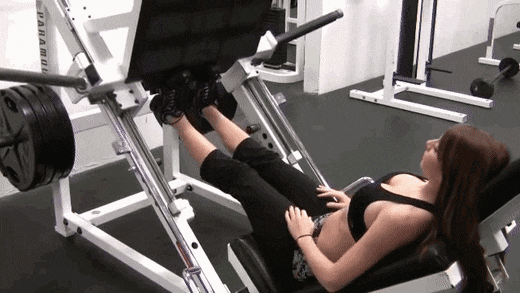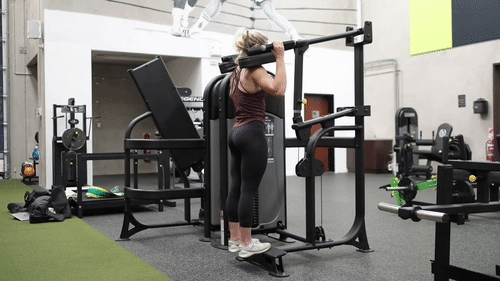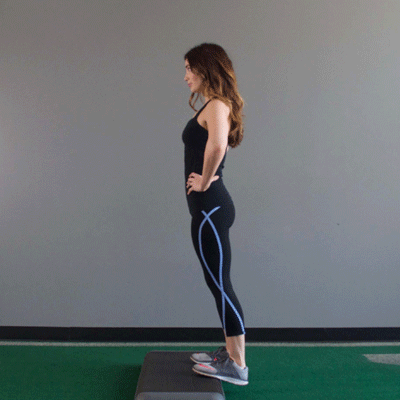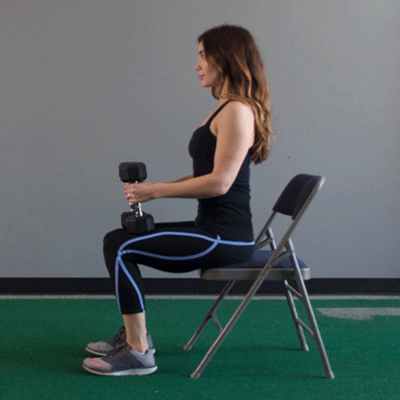DEVELOPMENT STRATEGIES FOR CALF MUSCLES
- Fatih Burak kaya
- May 6, 2024
- 8 min read
CALF (TRICEPS SURAE)
Gastrocnemius-soleus muscles are one of the most active muscle groups both while standing and walking. It is known as calf or triceps surae in the literature. This muscle group consists of the plantaris, gastrocnemius (medial and lateral heads) and soleus muscles, which not every person has. Calf muscles; It is a synergistic muscle group during walking, running and jumping. Despite its location at the ankle via the Achilles tendon, the calf muscle group has very different muscle morphology and architecture, thus showing some differences in muscle functions.
To explain with an example, the soleus muscle works more actively than the gastrocnemius in maintaining the standing position. The medial and lateral parts of the gastrocnemius have more leverage than the soleus muscle. For this reason, the medial and lateral sections produce the greatest force when the knee is extended.
Each part of the calf muscles contains sarcomeres that work in the ascending, plateau and descending curve of the length-to-length relationship. While the soleus muscle mostly works in the plateau and descending curve, the gastrocnemius muscle works in the plateau and ascending curve. In this case, the calf may experience active failure and stretch-mediated hypertrophy.

Although the calf muscles are attached to the Achilles tendon, they consist of intertwined tendon fascicles. This allows individual muscles to work independently during activation.

GASTROCNEMIUS
The starting point of the Gatrocnemius (medial-lateral heads), its two parts cross the knee and ankle joint and function as a knee flexor and stabilizer by working synergistically with the ankle extensor (planter flexor) and hamstring muscle. Gastrocnemius connects to the Achilles tendon, which is a common tendon that starts from the medial and lateral condyles of the femur bone and goes to the calcaneus with the soleus muscle, and is also one of the strongest tendons in our body.

SOLEUS
The soleus is a monoarticular (single-joint) muscle containing a very high percentage (88%) of slow-twitch muscle fibers. It is located on the superficial back side of the leg along with the gastrocnemius muscle (GM) and plantaris muscle. Since it is attached to a single joint (ankle), it only performs plantar flexion function. It is very active in movements that require less strength, such as jogging, walking and standing.

What are Effective Exercises for the Calf (Triceps Surae) Muscle?
In order for the gastocnemius and soleus muscles to be activated effectively, the appropriate position must first be established. Exercising the gastrocnemius muscle in a position where the knees are extended without causing active failure (standing calf raise exercise). Exercising the soleus muscle at maximum level by putting the gastrocnemius muscle into active insufficiency in a position where the knees are flexed (seated calf raise.) The movements performed in these positions activate the calf muscles.
Variable exercise selection appears to be an appropriate strategy for reinforcing overall muscle gains in response to a resistance training program. It is also recommended to perform the same exercise in different joint positions to ensure region-specific muscle development.
Calf raises, resistance training is often included to increase the size and strength of the gastrocnemius and soleus muscles. Many different populations are interested in training these muscles, such as sprinters and jumpers to improve performance, bodybuilders to increase muscular symmetry of the lower extremity, older adults to maintain mobility, and recovering patients. The rationale for varying foot positions is based on the assumption that different foot positions will provide maximal activation of both MG and LG across sets containing these variations. (3)
In the study, all 20 subjects were able to successfully complete 12 repetitions under 3-foot position conditions. There was no significant difference between MG and LG for the neutral position. During the IR position, significantly more activation of LG than MG occurred, whereas during ER position, significantly more activation of MG than LG occurred. (3) This and many other studies support the idea that changing the foot position during the calf raise exercise will lead to varying degrees of MG and LG activation. (1), (2), (3), (4)
In another study conducted in 2020, measurements were made to evaluate changes in the length of the medial and lateral gastrocnemius heads. Positioning the foot outward enhanced increases in the length of the medial gastrocnemius head, while positioning the foot inward resulted in greater gains for the lateral gastrocnemius head. Our results demonstrate that selective head-specific muscle hypertrophy for the gastrocnemius can be achieved after 9 weeks of calf training in young male adults. (one)
In summary, if you want the gastrocnemius muscle to work proportionately, keeping the foot flat is the ideal position. Rotating the foot externally and internally creates different activations in the medial and lateral parts of the gastrocnemius muscle.

MG: Medial gastrocnemius
ML: Lateral gastrocnemius
FPO: Extrovert
FPI: Introvert
FPF: Neutral
IR: INTERNAL ROTATION
ER: EXTERNAL ROTATION
HYPERTROPHY ACCORDING TO FIBER TYPE
Calf muscles are predominant in slow-twitch type 1 muscle fibres. Johnson et al. reported that the soleus muscle tends to have 80-96% type I muscle fibers. 98%, Edgerson et al. He stated that the gastrocnemius muscle contains 50-70% type I muscle fibers. (2), (7), (8). For this reason, he suggested that type I muscle fibers should be trained with low weight and high repetitions in order to respond better to hypertrophy, while type II muscle fibers should be trained with high weight and low repetitions (2).
Muscle fiber growth has been reported to be 50% greater in type II fibers than type I fibers, and type II fibers have been at the forefront in exercise program design because they create a high hypertrophy effect. (12), (13). In addition, some studies have proven that type II muscle fibers develop after high-intensity training. (14)
In recent years, the effect of training on hypertrophy according to fiber type has been examined, and therefore some narrow ideas in the past have been replaced by broader ideas.
Jackson et al. In his study where both high and low loads were used, the increase in the size of all muscle fiber types led to questioning of fiber type-specific hypertrophy. (15)
No single conclusion should be drawn from this study. In a different study involving high and low loads, it was stated that high loads caused hypertrophy in both type I and type II muscle fibers. (16)
The point to be considered is this: The methods used in the research are as important as the results of the research. As a result of the research, although it was stated that high loads were more effective, the fact that the low load group did not take the sets to exhaustion brought the high load group to the fore.
Schoenfeld et al. In another study conducted by , calf exercises were performed with 6-10TM and 20-30TM. The aim here is to examine whether the calf muscles can respond better to low and high repetitions. As a result of the research, soleus and gastrocnemius muscles gave similar responses to low and high weight. With this result, the low-load-high-repetition hypothesis of type I muscle fibers was not confirmed. (2)
The best response of the calf muscle to hypertrophy is both heavy and light loads. For this reason, the fact that the calf muscle tends to be type I muscle fiber does not mean that it can respond better to light and high repetition exercises. As a result of the findings, there is evidence for the existence of fiber type-specific hypertrophy, (17), (18), (19) and there is evidence that close hypertrophy can occur in all muscle fibers regardless of the load. (20), (21), (22)
To summarize, when the aim is to maximize muscle mass, it will be more efficient to train in a wide repetition range. It is thought that an approach combining high and low repetition training will be suitable for the development of all fiber types.
Below are various movements that we can improve the calf muscle.
BARBELL CALF RAISE

LEG PRESS MACHINE CALF RAİSE
STANDING CALF RAİSES MACHİNE
STANDING CALF RAISE
SEATED DUMBBELL CALF RAİSE
SEATED CALF RAISE MACHINE

FATİH BURAK KAYA
BEYKOZ UNIVERSITY PHYSIOTHERAPY
PERSONAL TRAINER
RESOURCES
(1) Different Foot Positioning During Calf Training to Induce Portion-Specific Gastrocnemius Muscle Hypertrophy. JP Nunes, BDV Costa, authors E. Cyrino Published 1 August 2020 Biology Journal of Strength and Conditioning Research
(2) Do the anatomical and physiological properties of a muscle determine its adaptive response to different loading protocols? Brad J. Schoenfeld,Andrew D. Vigotsky,Jozo Grgic,Cody Haun,Bret Contreras,Kenneth Delcastillo,Aston Francis,Gilda Cote,Andrew Alto
(3) Medial and Lateral Gastrocnemius Activation Differences During Heel-Raise Exercise with Three Different Foot Positions Riemann, Bryan L; Limbaugh, G Ken; Eitner, Jayme D; LeFavi, Robert G.
(4) Analysis of Muscle Activation During Different Leg Press Exercises at Submaximum Effort Levels Da Silva, Eduardo Marczwski; Brentano, Michel Arias; Cadore, Eduardo Lusa; De Almeida, Ana Paula Viola; Kruel, Luiz Fernando Martins
(5) Surface Electromyographic Analysis of Soleus muscle activity in different shod conditions in Healthy Individuals – Systematic review Author links open overlay panelSanjeevGuptaaElina DewanjiSenbDhananjayGuptacDineshKumard
(6) Effects of Low- etc. High-Load Resistance Training on Muscle Strength and Hypertrophy in Well-Trained Men Schoenfeld, Brad J.; Peterson, Mark D.; Ogborn, Dan; Contreras, Bret; Sonmez, Gul T.
(7) Adaptive potential of human biceps femoris muscle demonstrated by histochemical, immunohistochemical and mechanomyographical methods Raja Dahmane, Srdjan Djordjevič & Vika Smerdu
(8) Muscle fiber type populations of human leg muscles VR Edgerton, JL Smith, DR Simpson
(9) Are the Hypertrophic Adaptations to High and Low-Load Resistance Training Muscle Fiber Type Specific? Jozo Grgic1,* and Brad J. Schoenfeld2
(10) Responses of knee extensor muscles to leg press training of various types in human A Netreba 1, D Popov, Ya Bravyy, E Lyubaeva, M Terada, T Ohira, H Okabe, O Vinogradova, Y Ohira
(11) [Physiological effects of using the low intensity strength training without relaxation in single-joint and multi-joint movements] [Article in Russian] AI Netreba, DV Popov, EV Liubaeva, Ia R Bravyĭ, AB Prostova, Iu S Lemesheva, OL Vinogradova
(12) Characterization and Regulation of Mechanical Loading-Induced Compensatory Muscle Hypertrophy Gregory R. Adams,Marcas M. Bamman
(13) The α7β1-integrin increases muscle hypertrophy following multiple bouts of eccentric exercise Kai Zou, Benjamin M. Meador, Brian Johnson, Heather D. Huntsman, Ziad Mahmassani, M. Carmen Valero, Kimberly A. Huey, and Marni D. Boppart Show fewer authors
(14) A mechanism for increased contractile strength of human pennate muscle in response to strength training: changes in muscle architecture Per Aagaard,Jesper L. Andersen,Poul Dyhre-Poulsen,Anne-Mette Leffers,Aase Wagner,S. Peter Magnusson, Jens Halkjær-Kristensen, Erik B. Simonsen
(15) Skeletal muscle fiber area alterations in two opposing modes of resistance-exercise training in the same individual Catherine G. Ratzin Jackson, Arthur L. Dickinson & Steven P. Ringel
(16) Comparative effects of high- and low-intensity resistance training on thigh muscle strength, fiber area, and tissue composition in elderly women DR Taaffe,L. Pruitt,G. Pyka,D. Guido,R. marcus
(17) [Optimization of training: development of a new partial load mode of strength training]. Vinogradova OL, Popov DV, Netreba AI, Tsvirkun DV, Kurochkina NS, Bachinin AV, Bravyĭ IaR, Liubaeva EV, Lysenko EA, Miller TF, Borovik AS, Tarasova OS, Orlov OI
(18) Morphological and Neurological Contributions to Increased Strength Jonathan P. Folland & Alun G. Williams
(19) [Physiological effects of using the low intensity strength training without relaxation in single-joint and multi-joint movements].
Netreba AI, Popov DV, Liubaeva EV, Bravyĭ IaR, Prostova AB, Lemesheva IuS, Vinogradova OL
(20) Microvascular adaptations to resistance training are independent of load in resistance-trained young men Tanya M. Holloway, Robert W. Morton, Sara Y. Oikawa, Sean McKellar, Steven K. Baker, and Stuart M. Phillips
(21) Neither load nor systemic hormones determine resistance training-mediated hypertrophy or strength gains in resistance-trained young men Robert W. Morton*, Sara Y. Oikawa*, Christopher G. Wavell, Nicole Mazara, Chris McGlory, Joe Quadrilatero, Brittany L. Baechler, Steven K. Baker, and Stuart M. Phillips
(22) Resistance Exercise-induced Changes in Muscle Metabolism are Load-dependent Changhyun Lim1,2, Hyo Jeong Kim3, Robert W. Morton1, Roger Harris4 , Stuart M. Philips1,Tae Seok Jeong5, Chang Keun Kim




Comments